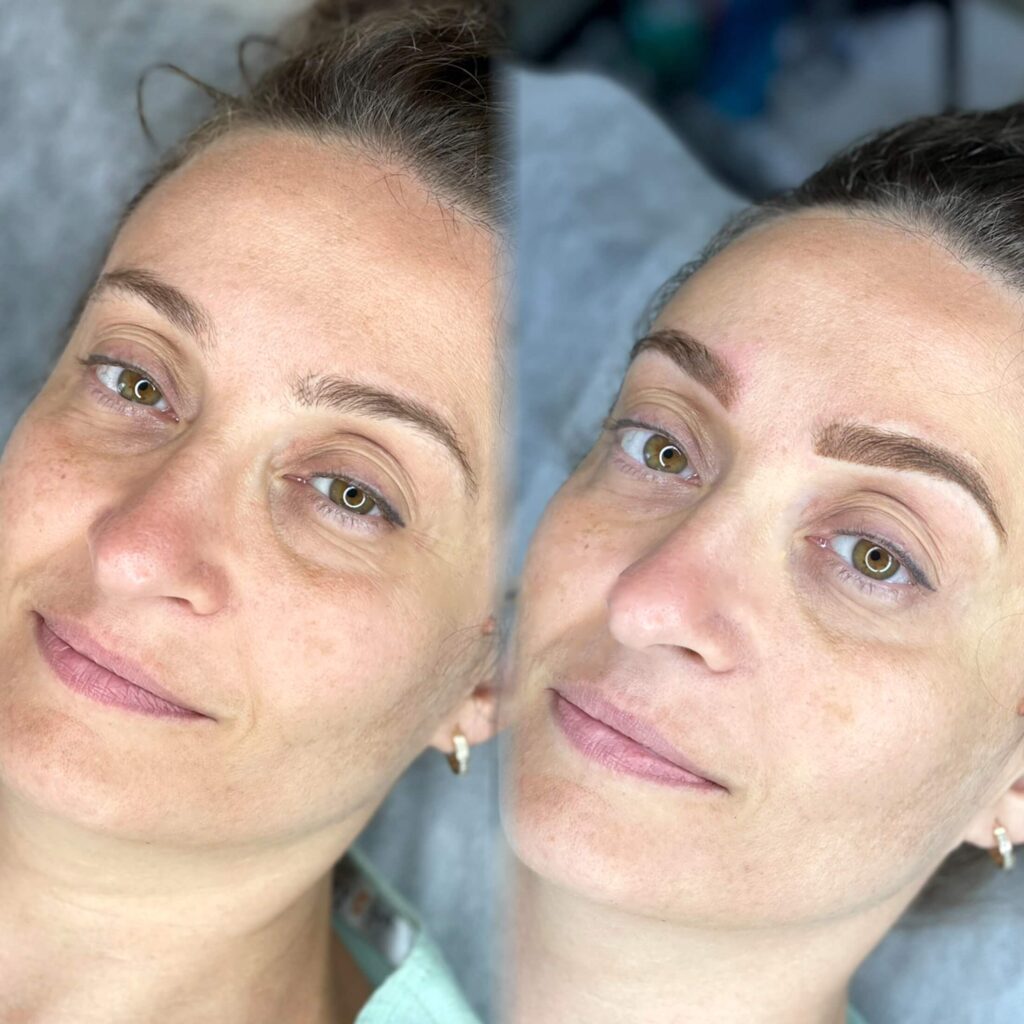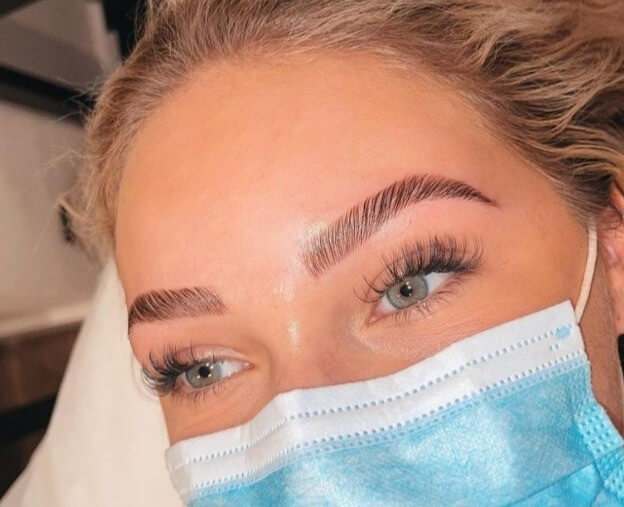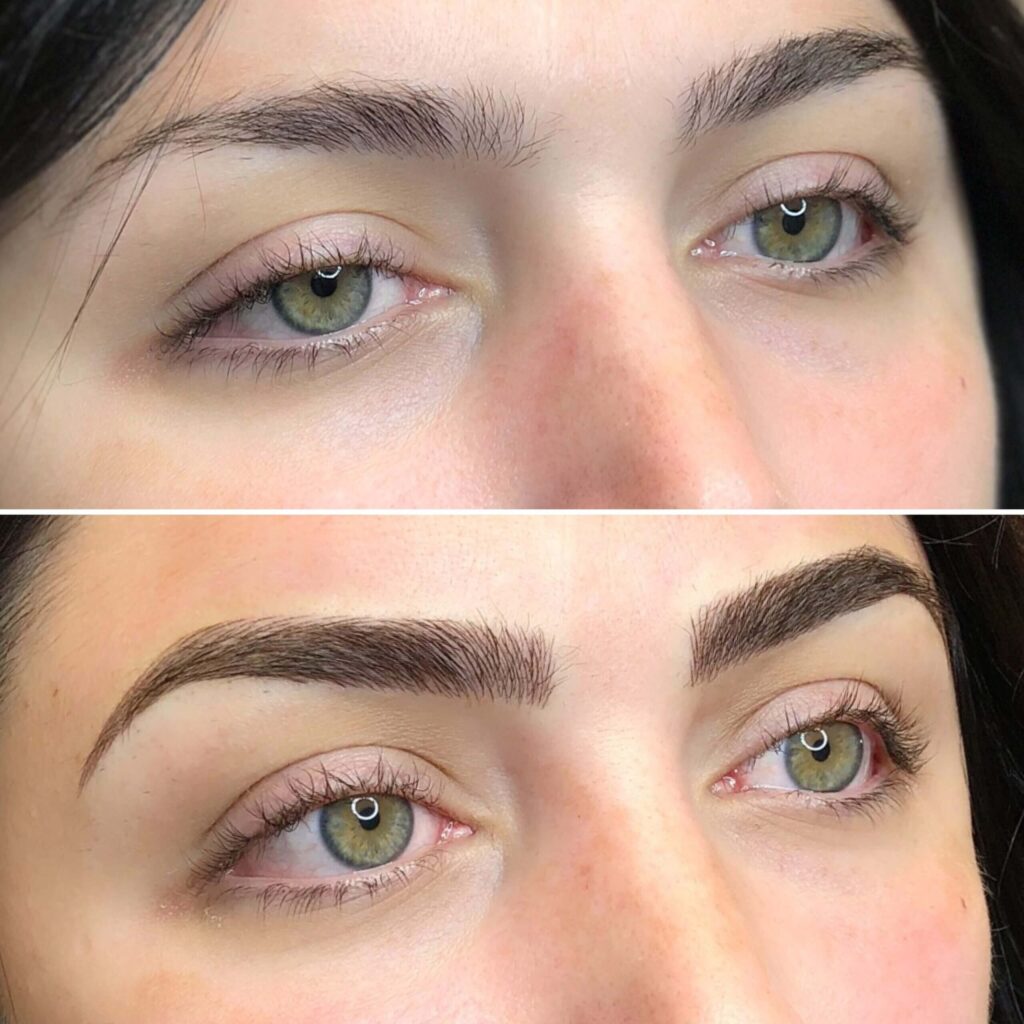Powder Brows have revolutionized the semi-permanent makeup industry by offering a solution for those seeking fuller, more defined eyebrows without daily maintenance. This technique involves depositing pigment into the skin’s surface layers using a specialized tool that creates a soft, powdered effect mimicking perfectly applied eyebrow makeup. Unlike traditional microblading, Powder Brows create a more subtle, airbrushed appearance rather than individual hair strokes.
The procedure typically lasts between 1-3 years depending on skin type, lifestyle factors, and aftercare adherence. Many clients appreciate Powder Brows for their versatility across different skin types, including oily skin where microblading often fades quickly. The healing process involves minimal downtime, with most recipients returning to normal activities within 24 hours.
Those considering this enhancement should research qualified technicians who specialize in this specific technique. Results vary based on individual skin characteristics and desired aesthetic outcome. Proper consultation before the procedure ensures expectations align with realistic possibilities for each client’s unique features.
Understanding Powder Brows

Powder brows represent one of the most popular semi-permanent makeup techniques in the modern beauty industry. This technique creates soft, filled-in brows with a powdered effect that mimics the look of perfectly applied brow makeup.
Defining Powder Brows
Powder brows are a semi-permanent makeup technique where tiny dots of pigment are deposited into the skin using a digital machine or manual tool. This method creates a soft, shaded appearance similar to brow powder makeup, hence the name.
The technique involves building layers of tiny dots with varying density to create a gradient effect. Typically, the front of the brow appears lighter while the tail appears more defined and darker.
The procedure usually takes 2-3 hours and includes consultation, numbing, mapping, and the actual application. Results last between 1-3 years, depending on skin type, aftercare, and lifestyle factors.
Benefits of Powder Brows

Powder brows offer significant time-saving advantages, eliminating daily brow makeup application. This technique is particularly beneficial for individuals with sparse, over-plucked, or asymmetrical brows.
The powdered effect works exceptionally well for oily skin types, as the technique tends to retain color better than other methods. Unlike traditional tattooing, powder brows use pigments rather than inks, resulting in colors that fade more naturally without turning blue or orange.
Key Benefits:
- Natural-looking fullness that enhances facial features
- Waterproof and smudge-proof results
- Customizable shape, color, and density
- Less invasive and painful than traditional tattooing
- Suitable for most skin types, especially oily skin
Comparison to Other Brow Techniques

Powder brows differ significantly from microblading, which creates fine hair-like strokes instead of the soft, powdered effect. While microblading mimics individual hairs, powder brows simulate the look of brow powder makeup.
Comparison Chart:
| Technique | Effect | Longevity | Best For |
|---|---|---|---|
| Powder Brows | Soft, shaded, powdery | 1-3 years | All skin types, especially oily |
| Microblading | Hair-like strokes | 1-2 years | Normal to dry skin |
| Combo Brows | Mix of strokes and shading | 1-3 years | Most skin types |
| Traditional Tattoo | Solid color | 5+ years | Long-term commitment |
Powder brows tend to heal faster and with less scabbing than microblading. They also require fewer touch-ups and maintain their appearance longer on oily skin types where microblading often fades more quickly.
Procedure and Aftercare
Understanding the powder brows process from preparation through healing ensures optimal results and minimizes complications. Proper aftercare is crucial for color retention and achieving the desired finished look.
Pre-Procedure Preparation
Clients should avoid blood thinners like aspirin, alcohol, and fish oil supplements for at least 48 hours before the appointment. Caffeine consumption should be limited on the day of the procedure to reduce sensitivity and bleeding.
Exfoliating products and retinol should be discontinued around the brow area one week prior. Clients with extremely oily skin may benefit from using oil-control products in the days leading up to their appointment.
A thorough consultation with the technician is essential to discuss expectations, desired shape, and color. Taking reference photos of preferred brow styles can help communicate aesthetic goals effectively.
The Powder Brows Procedure
The session typically begins with the technician mapping the brow shape according to facial proportions and client preferences. A topical anesthetic is applied to minimize discomfort during the procedure.
Using a digital machine or handheld tool, the technician deposits pigment into the upper layers of the skin through a stippling technique. This creates the characteristic soft, powdered effect rather than individual hair strokes.
The entire process usually takes 1.5-2.5 hours depending on the complexity of the design and desired saturation. During this time, multiple layers of pigment are applied to achieve the desired depth and opacity.
Clients often report minimal pain, describing the sensation as scratching or mild pressure. The technician will check in regularly to ensure comfort throughout the procedure.
Post-Procedure Aftercare

For the first 24-48 hours, gently blot the brows with a clean tissue to remove excess fluid. Avoid direct water contact, steam, saunas, and swimming pools for 7-10 days to prevent premature fading.
Apply the recommended aftercare ointment sparingly 2-3 times daily using clean fingertips or a cotton swab. Petroleum-based products should be avoided unless specifically recommended by the technician.
Do not pick, scratch, or peel the forming scabs as this can remove pigment and cause patchiness. Sleeping on the back helps prevent friction against pillowcases that might disrupt the healing process.
Products to avoid during healing:
- Makeup around the brow area
- Exfoliants and retinol products
- Glycolic acids and skincare containing alcohol
- Sweat-inducing exercise for 7 days
Healing Process and Touch-Ups

The initial healing phase typically follows a predictable pattern. Days 1-2 bring swelling and intense color, while days 3-5 involve scabbing and flaking. By days 7-10, the superficial healing is complete.
The color appears significantly lighter after initial healing, which is normal and expected. The true color develops over 4-6 weeks as the skin regenerates and the pigment settles.
A touch-up appointment scheduled 6-8 weeks after the initial procedure addresses any uneven areas and intensifies the color if desired. This session is essential for achieving the final, polished look.
Annual maintenance sessions help counteract fading from sun exposure, skincare products, and natural cell turnover. With proper care, powder brows typically last 1-3 years before requiring a color refresh.
Considerations and Contraindications
Before committing to powder brows, clients should understand who makes an ideal candidate, potential risks involved, and specific situations where this procedure may not be recommended.
Suitability for Powder Brows
Powder brows work best for individuals with oily skin types, as the powder technique tends to hold better in skin with higher oil production. Those seeking a soft, makeup-like appearance rather than defined hair-strokes will appreciate this technique’s natural results.
Clients with mature skin often benefit from powder brows, as the skin-healing process tends to be more predictable compared to microblading. The technique is also suitable for those who want longer-lasting results, as powder brows typically maintain their appearance for 2-3 years.
People with active lifestyles who sweat frequently may find powder brows more durable than other semi-permanent makeup options. The shading technique creates a more resilient result that withstands environmental factors better.
Risks and Possible Side Effects
Common Side Effects:
- Temporary redness and swelling around the brow area
- Mild discomfort during healing process
- Itching during the scabbing phase
- Color appearing darker for the first 7-10 days
Allergic reactions to pigments can occur, though they’re rare with quality products. A patch test 48 hours before the procedure is recommended for clients with sensitive skin or known allergies.
Improper aftercare may lead to complications such as infection, premature fading, or uneven healing. Following the artist’s instructions precisely helps minimize these risks.
Some clients experience color shifting over time, where pigments may develop unwanted undertones. This happens more frequently with lower-quality pigments or incorrect color selection for the client’s skin tone.
Who Should Avoid Powder Brows
Absolute Contraindications:
- Pregnant or breastfeeding women
- Individuals on blood thinners or with bleeding disorders
- People with active skin infections or conditions in the brow area
- Clients undergoing chemotherapy or radiation therapy
Those with keloid scarring tendencies should approach powder brows with caution, as the skin trauma could potentially trigger excessive scar formation. A consultation with both a dermatologist and the brow artist is advisable.
Individuals using retinoids, glycolic acids, or other strong exfoliating products must discontinue these treatments at least 2 weeks before the procedure. These products can affect skin sensitivity and healing capacity.
Clients with autoimmune disorders should consult their physician before proceeding, as some conditions may interfere with proper healing or pigment retention.
